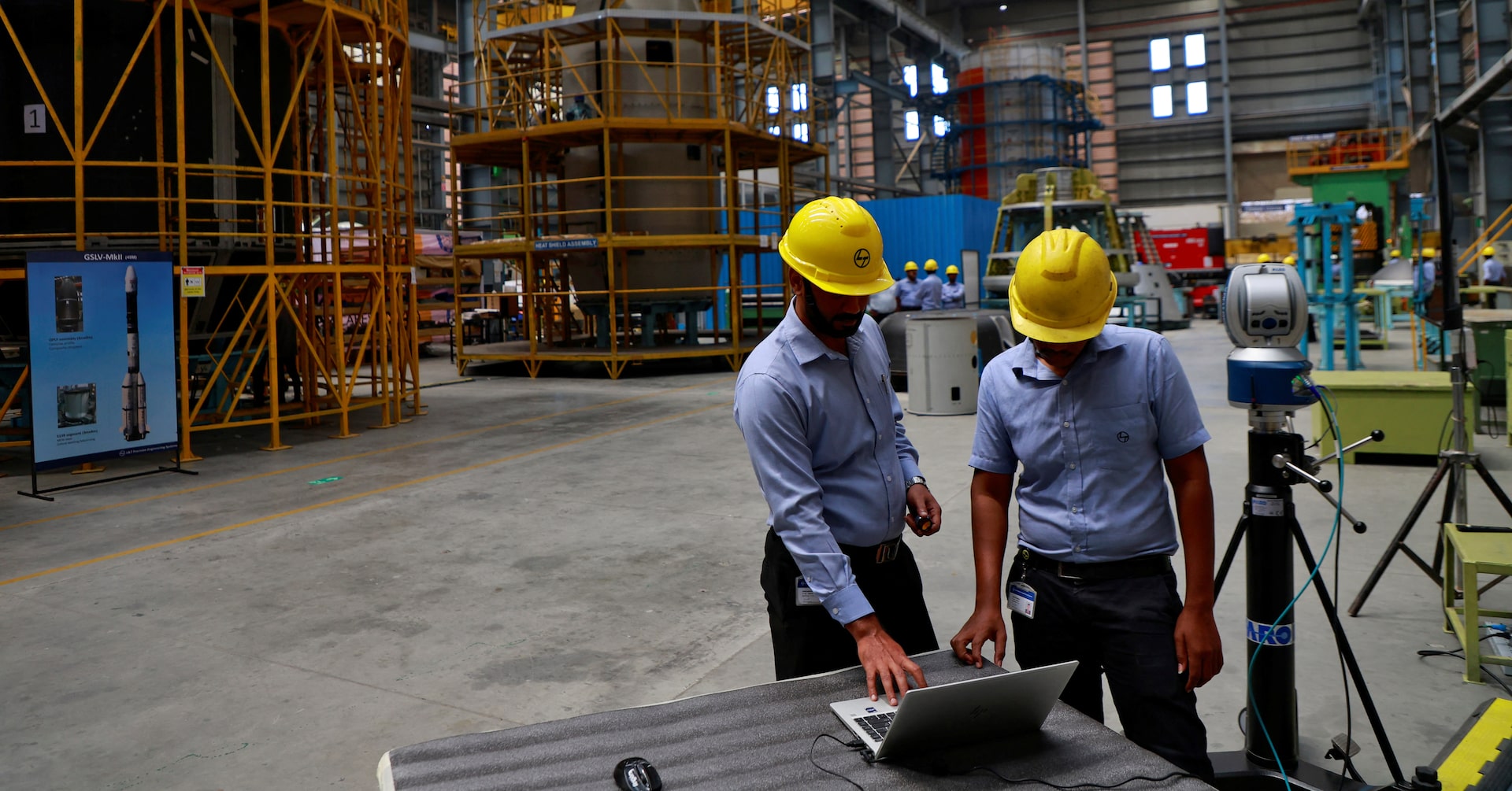India’s economy expanded by an estimated 6.7% in the April–June quarter, according to a Reuters survey of economists, reflecting a slowdown from the previous quarter’s 7.4%. The dip was driven by sluggish industrial output and weak private investment, despite increased government spending in the first quarter of the fiscal year. n nThe Reserve Bank of India (RBI) reduced its key repo rate by 75 basis points during the period, including a surprise 50-basis-point cut in June, but the stimulus has had limited effect on overall economic momentum. Many commercial banks have not fully passed on the lower rates to borrowers, dampening consumer demand. n nThe median projection from 70 economists surveyed between August 18 and 26 anticipated GDP growth of 6.7%, slightly above the RBI’s own forecast of 6.5%. Estimates ranged from 6.2% to 7.3%, with official figures scheduled for release on August 29. n nOutlooks for the coming quarters suggest continued moderation: 6.5% in July–September, 6.3% in October–December, and 6.2% in January–March. This would bring the full fiscal year average to 6.3%, marking the weakest annual pace in five years. n n”Manufacturing activity remains lackluster, and industrial expansion has underperformed,” noted Madhavankutty G, chief economist at Canara Bank. He cited global trade tensions and policy uncertainties as key factors disrupting private capital expenditure. n nGross value added (GVA), a more stable indicator of economic performance that excludes indirect taxes and subsidies, was projected to rise 6.4% in the June quarter. Analysts suggest that the temporary boost to GDP from tax adjustments and reduced subsidies in the earlier quarter faded during this period. n nKunal Kundu of Societe Generale highlighted structural constraints limiting faster expansion, while noting that stable food prices and strong agricultural output have helped sustain rural consumption. However, urban demand remains weak due to stagnant incomes and job losses. n nThe government has increased infrastructure and capital spending to stimulate growth, a strategy initiated before recent strains in trade relations with the U.S., a major market for Indian goods and services. n nEconomists caution that a recovery in urban consumer spending hinges on a revival in private investment. “At current growth rates of 6.4–6.5%, we cannot generate sustainable, high-quality employment,” said Debopam Chaudhuri of Piramal Group. “Public investment supports job creation, but long-term, well-paying positions depend on private sector capital spending.” n
— News Original —nIndia growth likely slowed to 6.7% in April–June and set to ease further – Reuters pollnBENGALURU, Aug 26 (Reuters) – India ‘s economy likely slowed to 6.7% in the April–June quarter, a Reuters poll of economists showed, as weak industrial activity and subdued private investment offset a rebound in government spending. n nThe Indian government has ramped up capital spending during the first quarter of this fiscal year, but weak consumer demand has kept private investment subdued in Asia ‘s third-largest economy. n nSign up here. n nThe Reserve Bank of India ‘s (RBI) efforts to spur demand by cutting the key repo rate by 75 basis points during the same period, including a larger-than-expected half-percentage-point reduction in June, have had a muted impact on growth. Many private banks have yet to pass on lower rates to consumers. n nAn expected slowdown in gross domestic product (GDP) to 6.7% from 7.4% in the previous quarter according to the median forecast of 70 economists in an August 18–26 Reuters poll is still slightly higher than the RBI ‘s recent forecast of 6.5%. n nForecasts for the data, due on August 29, ranged from 6.2% to 7.3%. n nThe poll showed India GDP growth slowing to 6.5% this quarter, 6.3% in October-December and 6.2% in January-March. Growth was forecast to average 6.3% this fiscal year, the slowest in five years. n n”Industrial growth has not been very good, and manufacturing is also showing sluggish signs,” said Madhavankutty G, chief economist at Canara Bank. “Tariffs and global uncertainties have been one of the major factors that created a shock – and that has slowed private capex.” n nGross value added (GVA), a measure of economic activity considered more stable than GDP, rose 6.4% in the June quarter, the poll predicted. GVA excludes volatile indirect taxes and government subsidies. n nKunal Kundu, India economist at Societe Generale, said the boost from indirect tax changes and subsidy cuts that lifted GDP above GVA in January-March likely faded in April–June, adding that structural challenges are holding back faster growth. n nWhile easing food prices and robust growth in the agricultural sector have kept rural demand resilient, economists said stagnant wages and job cuts were holding back urban consumption. n nThat has prompted the government to ramp up spending, which began long before recent deteriorating ties with the U.S., a major buyer of India ‘s services exports and India ‘s top destination for exported goods. n nSome economists warn urban consumption will only rebound if private investment accelerates. n n”At 6.4–6.5% (GDP growth), we won ‘t be able to create meaningful employment on a sustained basis,” said Debopam Chaudhuri, chief economist at Piramal Group. n n”Government expenditure and infrastructure investments can take some of the load in generating employment…(but) it is private capex that has to pick up, to ensure good-quality, high-paying jobs for a large section of our population.” n nReporting by Pranoy Krishna; Polling by Devayani Sathyan and Vijayalakshmi Srinivasan; Editing by Hari Kishan, Ross Finley and Louise Heavens
